The business of design: Alex Nisbett, London 2012 Olympic and Paralympic Games
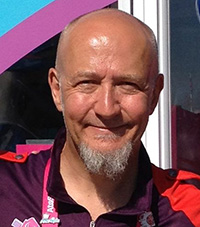
In the third of the our business of design series I spoke to Alex Nisbett, Project Manager for the Spectator Experience at the London 2012 Olympic and Paralympic Games.
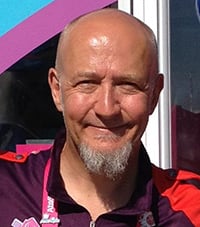 Alex is a service designer with extensive experience working for agencies including Engine Service Design and IDEO. He is also on the advisory board for the Service Design Network.
Alex is a service designer with extensive experience working for agencies including Engine Service Design and IDEO. He is also on the advisory board for the Service Design Network.
Our conversation focussed on his recent experiences working as a project manager for the spectator experience at the London 2012 Olympic and Paralympic Games.
Throughout the interview Alex speaks passionately about the value of getting closer to the delivery of service and the insights that that has provided him.
- "The majority of times as a designer you are a step or two away from [the actual customer experience] – even if you’re used to walking in the customers’ shoes you’re rarely behaving as a member of staff – and I think that is something I’ve always been fascinated in. To walk-the-walk has taught me a lot. Based on my experiences I will encourage those in the c-suite to take time to get down there."
- "I would urge any designer to take off your design hat and experience being a non-designer. To spend time to really understand an organisation. Be a curious chameleon and be happy about that."
I understand you are working for the organising committee for the London Olympic and Paralympic Games, can you tell me a bit about your role?
I was employed as a contract project manager about 14 months ago into what was at the time a small Spectator Experience team. London is the first organising committee to explicitly acknowledge spectators as one of its client groups. So the organisation had no blueprint, it was starting pretty much from scratch.
Ever since London was awarded the bid back in 2005, I always wanted to play some role and so as luck would have it a phone call from a friend of a friend led me here.
I am a project manager, but of course I use my design skills. The role means taking my foot off the designer pedal a bit and being pragmatic. That allows me to learn a little more, to become more broad- and open-minded, and be more comfortable with using tools I hadn’t necessarily used previously on a day-to-day basis.
I had a specific remit to understand the risks to the spectator experience across a number of key Olympic and Paralympic venues and then figure out what we can do about the risks to make the experience better.
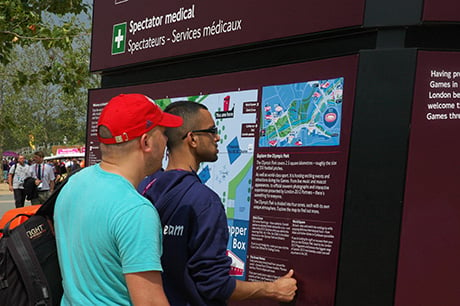

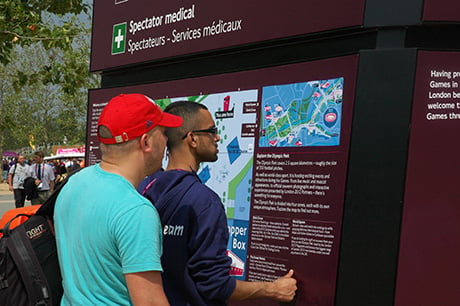
My being called a project manager is a big clue as to the way design, especially service design, doesn’t have a natural home in many organisations. If you are using design or design skills you need to be comfortable with not necessarily being referred to as a designer.
Would I be correct in thinking that your role has got you closer to service delivery than is usually the case for a designer?
The role has changed multiple times, project manager was a catch all term. We all underwent shifts from strategy into production and then delivery. My particular role was not about delivering what I had designed because we brought in specialist delivery teams to do that. My role during the Games was analysis and refining the experience.
In terms of your design background, were you the only designer in the role?
The Spectator Experience team was part of the brand and marketing department. So part of quite a visual and familiar world. In the Spectator Experience team there were two of us who had previously worked at Engine as service designers.
Did you need to educate others about your designerly way of working?
The designerly way has been a way of thinking and problem solving. To a lesser degree it is about the tools we are using. The vast majority of the people we worked with had no way of knowing we were from a slightly different cut from the next person.
This environment is unusual. There are lots of different people from different perspectives. There is a wonderful sense of taking your designerly skills and mixing them up with some of the standard processes or approaches that exist and coming out with something new or different. There is explicit permission to do that.
Spectator experience is a new thing for an OCOG (the organising committee), so we were looking at taking tools from here and approaches from there and mixing them up with ways of working that were already established.
Can you tell me about some of the biggest and most interesting challenges you’ve faced?
I have never worked as an in-house designer before. I think the biggest learning is the change of culture. In the early days it wasn’t just about working in a different organisation it was being surrounded by a very different bunch of people, different processes. Also where I work is in the business centre part of town and that again is a very different thing. The building I work in is owned by a global bank. The whole set up is very ‘corporate’ and LOCOG is a ‘corporate’ organisation.
So the culture was a big challenge and there are millions of manifestations of that. Part of what I wanted to do was to experience that. This has given me the opportunity to work very closely with people from management consultancy backgrounds, people with Games experience, those that focus on technology, or catering, or transport, as well as the creatives designing signage and the look of the Games. It has been exposure to such a broad bunch of people that you simply don’t get unless you work in an organisation that makes and delivers things.
The other difference is being very comfortable with and having an enthusiasm for working in different ways. I think it is a huge benefit to try stuff out.
Another thing is being able to smell the happiness and satisfaction of customers at first hand. That is something that in a creative organisation or agency you are a step or two removed from. The wonderful thing about being front of house is you are working with your customer at a one-to-one level. The majority of times as a designer you are a step or two away from that – even if you’re used to walking in the customers’ shoes you’re rarely behaving as a member of staff – and I think that is something I’ve always been fascinated in. To walk-the-walk has taught me a lot. Based on my experiences I will encourage those in the c-suite to take time to get down there.
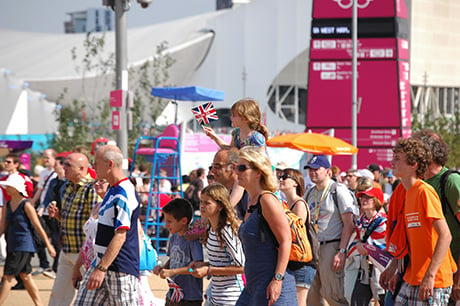

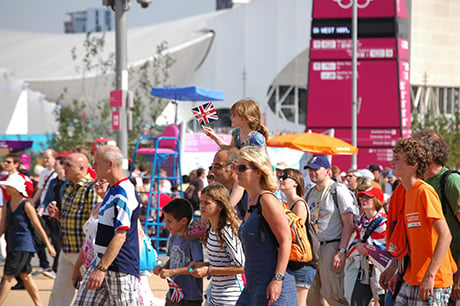
My mother attended the Paralympic Games and described the experience as “the single greatest day of her life” she then paused, and I think realised who she was talking to, and added “aside from the day you were born of course”. You must have heard so many positive things from so many people, are there any particular things you achieved that you can reflect on?
We were taken on board to solve some significant problems that the organisation knew existed. There were some things that happened in a number of venues that my work was totally fundamental to.
It is back down to that duality, if the spectator is informed, comfortable and happy. If spectator needs are being met they are going to behave in a different way than if they weren’t. If you do those things in a way that supports the operational needs then you get much value being created. That is exactly what happened.
I can look at some things and say I was fundamental to the proposition, the strategy, for producing it, rolling out and occasionally operating it. There were also things that we trouble-shot around Games time. Incremental improvements. I spotted opportunities for improvement, built a case for it, got it done and could see the improvement in some instances hours later.
Nothing that we delivered as part of our team was experiential fluff. Everything we did was operationally underpinned. Given the financial climate we could only build a case for something that has an operational requirement.
Some of the specific things we did were about supporting positive crowd flows to ensure that if spectators had to wait they were attracted and retained in a way they were happy about.
In other situations if there were queues that were going to happen we needed to look at ways to ensure spectators queued happily, we didn’t have riots on our hands, we didn’t have people traveling the wrong way.
A lot of the venues were existing venues being operated in new or different ways. People would arrive thinking they could go in this door and do this, the toilets are there, and there’s shops there, but come Games time we have had to strip out the shops or change the entrance. So we used design and informed the spectators about these changes.
It is critical that I advocate for spectators. I need to make sure that we are communicating in appropriate ways across the appropriate touchpoints. Advocacy is really important. Factually some of these changes could be communicated, but if you understand the spectators metaphorical and physical journey we know where that information is best located. There are things like that, the design touch. Understanding normal human behaviours.
So in terms of tools, were you using things like journey maps to communicate to the organisation about the end-to-end customer experience?
Yeah. There was a lot of journey mapping going on to understand the customer mindset and what they had to do when and where. As with many journey maps they were used in multiple different ways.
Journey mapping had already begun before I started. There is a sense that we might think that designers have the unwritten right to ownership of certain tools, but that is absolutely not the case. The guys here were all over collaboratively building and generating buy in through workshop activities, co-creation and using the visual tools that designers are used to seeing.
They may not necessarily do it to the same degree. I would also add that time was very tight and people have to move quickly.
One tool I hadn’t really come across before was the Risk Register. I had to Google it. It is a tool used by a lot of architects and manufacturers. It explores risks to success, rating them and then looking at ways to mitigate them. In a way it is the antithesis of the opportunities to unmet needs designers look for. It feels like a positive we’re looking for, whereas risk registers capture the negative. Ultimately you could argue that you get to the same kind of solution, but I think there are some interesting things to explore in terms of subtle differences between tools.
There was a constant sense of urgency, a drumbeat that underpinned everything. There are 6 months to go, 3 months to go, 5 days to go. And everyone knew where they needed to be at particular periods of time.
So you had the Olympic Games and then weeks later the Paralympic Games. Did everything go perfectly first time or did you refine as you went?
I would be lying if I said everything was perfect from day one, and no one expected that. There were some nice billboards put up by the Paralympic TV broadcaster during the transition between the Olympics and Paralympics that said “thanks for the warm-up guys”. Nearly every venue was used in both games, so there were a lot of learnings from the Olympics that were used for the Paralympics. As well as learnings from the first hour or day. It wasn’t a constant thing, but the opportunity for learning and refinement was certainly there.
So the Olympics was the pilot.
In some ways you could say that; although to be fair we approached the two games as one but understood that the improvement curve would be steep.
Can you tell me about the various things you were brokering to ensure the success of your work?
Part of the success of these Games was down to how broadly the vision for the spectator experience was cascaded outside of the organisation. There were some very key stakeholders across the city that were engaged very early on, before my time. They realised that you needed to work with people outside the organisation. Part of the success of the Games was down to things like transport. It didn’t fall over once. If you’d have asked any Londoner what was going to be biggest problem, transport would have been in the top two or three.
There was also a campaign about getting people in offices to work different hours, to avoid Games Time transport peaks, that worked particularly well.
There were so many things that were outside of our direct control, but people realised they could influence the spectator experience. Getting those things right had a huge impact.
There was a very strong spectator-centric vision that was created two and a half years years ago. That vision was one of the key success factors.
What is the biggest single thing you’re taking from the experience?
When I started it was about the opportunity to work on the Olympic Games, but I’ve got far more out of it than simply that. I think the big thing on a personal level is how much it has broadened over a short space of time where I am now. I feel like I have benefited hugely in a way that spending 14 months in a design organisation would not have given me.
The biggest thing is being comfortable in being tested and stretched in a non-design environment and beginning to understand what designing within such an organisation looks like
Are there things you would recommend for a designer working in-house within a business? Things to read, approaches to take, etc. Things to ready them for the types of experiences you have had?
Two things. Learn to expect the unexpected. If you simply jump between design agencies you will fairly soon understand what to expect. Whereas working in-house you have to be open to expect almost anything: I am going to be misunderstood; people will totally get me; I will work as part of a big team; I will sink; I will be supported.
The culture of a design environment is such that we are all one, we have a shared understanding of each other; maybe half of us went to design school and have a similar aesthetic,. Whereas if you’re a small fish in a large (organisation) sea that can completely change. You find yourself working with guys whose focus and outlook on life is quite different.
The other thing, with my service design hat on, that this has given me in spades, which I have never got before, is the ability to work on the front line at the same time as you’re working back of house and looking down.
Having this 3ft view as well as a 30,000ft view and being able to switch between the two. Not just observing or interviewing customers, but actually working with them delivering services. We all wore the uniform and were indistinguishable from any one of 70,000 Games Makers. Boy do you learn a lot. You learn a lot about spectators needs and behaviours, but you also learn a lot about delivering service and creating experiences. That is a wonderful thing to have taken away from this.
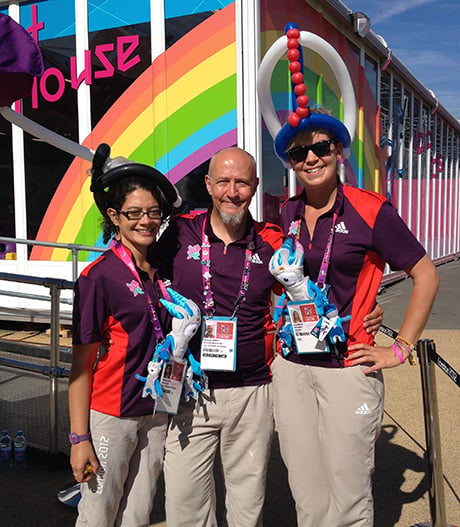

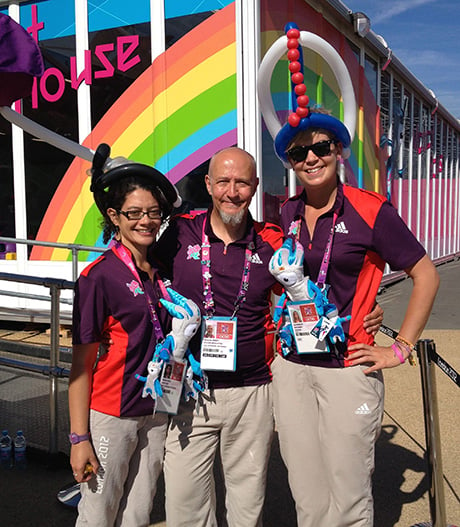
I would urge any designer to take off your design hat and experience being a non-designer. To spend time to really understand an organisation. Be a curious chameleon and be happy about that. You will see things from the other side of the fence by doing that. You see things from the organisations and the customer’s perspective.
There is that lovely book by Alex Frankel (Punching In) where he goes through recruiting and training processes and then works on the shop floor of various companies. He explored the company cultures from the front of house. That is what I’d recommend.
This interview was conducted by Iain Barker. If you would be interested to be interviewed as part of the business of design series, please contact iain@meldstudios.com.au.
